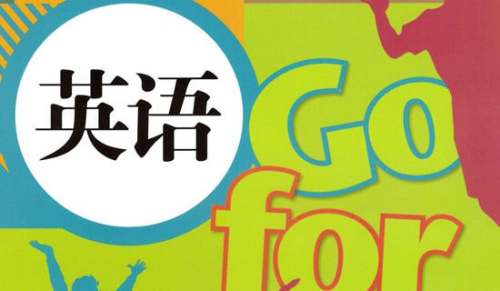關(guān)于小升初英語語法的復(fù)習(xí)資料
小升初英語復(fù)習(xí)是很多孩子和家長關(guān)注的。英語語法,主要是靠平時(shí)的積累,不過在備考之前集中對語法做復(fù)習(xí)還是很有必要的。以下是根據(jù)不同知識(shí)點(diǎn)進(jìn)行總結(jié)的英語語法復(fù)習(xí)資料,希望對小升初的孩子有所幫助!

1.人稱代詞
主格: I we you she he it they
賓格: me us you her him it them
形容詞性物主代詞:my our your her his its their
名詞性物主代詞: mine ours yours hers his its theirs
2.形容詞和副詞的比較級
(1) 一般在形容詞或副詞后+er older taller longer stronger, etc
(2) 多音節(jié)詞前+more more interesting, etc.
(3) 雙寫最后一個(gè)字母,再+er bigger fatter, etc.
(4) 把y變i,再+er heavier, earlier
(5) 不規(guī)則變化:well-better, much/many-more, etc.
3.可數(shù)詞的復(fù)數(shù)形式
Most nouns + s a book –books
Nouns ending in a consonant +y - y+ ies a story—stories
Nouns ending in s, sh, ch or x + es a glass—glasses a watch-watches
Nouns ending in o +s or +es a piano—pianos a mango—mangoes
Nouns ending in f or fe - f or fe +ves a knife –knives a shelf-shelves
4.不可數(shù)名詞(單復(fù)數(shù)形式不變)
bread, rice, water ,juice etc.
5. 縮略形式
I’m = I am you’re = you are she’s = she is he’s = he is
it’s = it is who’s =who is can’t =can not isn’t=is not etc
6. a/an
a book, a peach
an egg an hour
7. Preposition:
on, in ,in front of, between, next to, near, beside, at, behind.
表示時(shí)間: at six o’clock, at Christmas, at breakfast
on Monday on 15th July On National Day
in the evening in December in winter
8. 基數(shù)詞和序數(shù)詞
one – first two-second twenty-twentieth
9. Some /any
I have some toys in my bedroom.
Do you have any brothers or sisters?
10. be 動(dòng)詞
(1) Basic form: am/are/is
(2) 肯定和否定句 I am(not) from London.
My eyes are(not) small.
My hair is(not) long.
(3)一般疑問句: Am I a Chniese? Yes, you are. No, you aren’t.
Are they American? Yes, they are. No, they aren’t.
Is the cat fat? Yes, it is. No, it isn’t.
11. there be 結(jié)構(gòu)
肯定句: There is a …
There are …
一般疑問句:Is there …? Yes, there is./ No, there isn’t.
Are there…? Yes, there are. /No, there aren’t.
否定句: There isn’t …. There aren’t….
12. 祈使句
Sit down please
Don’t sit down, please.
13. 現(xiàn)在進(jìn)行時(shí).通常用“now”.
形式: be + verb +ing
eg: I am(not) doing my homework.
You/We/They are(not) reading.
He/She/It is(not) eating.
動(dòng)詞 —ing 的形式
Most verbs +ing walk—walking
Verbs ending in e -e + ing come—coming
Short verbs ending in a vowel + a consonant run –running swim—swimming
14 一般現(xiàn)在時(shí)。通常用 “usually, often, every day, sometimes”。
形式:
肯定句:
I go to school on foot every day.
She goes to school on foot every day.
一般疑問句:
Do you jump high? Yes, I do. / No, I don’t.
Does he jump high? Yes, he does. / No, he doesn’t.
否定句: We don’t go to school on Sundays.
My mother doesn’t like watching TV in the evening.
15. (情態(tài))動(dòng)詞can,must, should 后面直接用動(dòng)詞原形。
eg:
1. I / He / She / They can sing.
2.You should keep quiet in the library.
16. 一般過去時(shí)態(tài)
(a) be 動(dòng)詞的過去式:
I/He/she/it was(not)…. You/we/they were….
一般疑問句was, were 放在句首。
(b) 動(dòng)詞過去式:
肯定句: I watched cartoons.
She visited the zoo.
一般疑問句: Did you read book last night? Yes, I did. No, I didn’t.
Did she clean the desk just now? Yes, she did. No, she didn’t.
否定句: They didn’t go the the part yesterday.
He didn’t make model ships last week.
(c)動(dòng)詞過去式的變化:
規(guī)則動(dòng)詞的變化:
Most verbs +ed eg. planted,watered,climbed。
Verbs ending in e +d eg liked。
Verbs ending in a consonant +y --y +ied eg : study—studied
Short verbs ending in a vowel + a consonant eg: stop --stopped
不規(guī)則動(dòng)詞的變化:
is/am—was,are—were,do—did,have/has—had,make—made,fly-flew/u:/
eat—ate,take—took,run—ran,sing—sang,drink—drank 等等
【小升初英語語法的復(fù)習(xí)資料】相關(guān)文章:
小升初英語語法復(fù)習(xí)資料:名詞性從句01-12
2017小升初英語語法復(fù)習(xí)資料匯總02-24
小升初復(fù)習(xí)資料09-29
小升初語文復(fù)習(xí)資料06-10
小升初英語復(fù)習(xí)資料06-16
小升初語文的復(fù)習(xí)資料08-26
小升初英語復(fù)習(xí)資料大全07-26
小升初英語復(fù)習(xí)資料歸納01-11